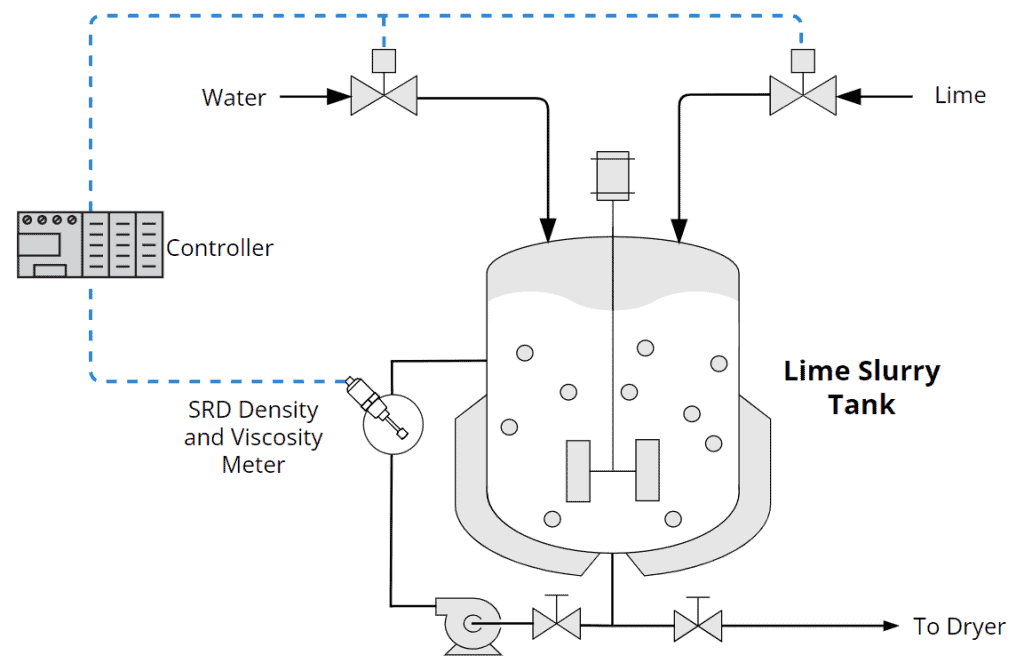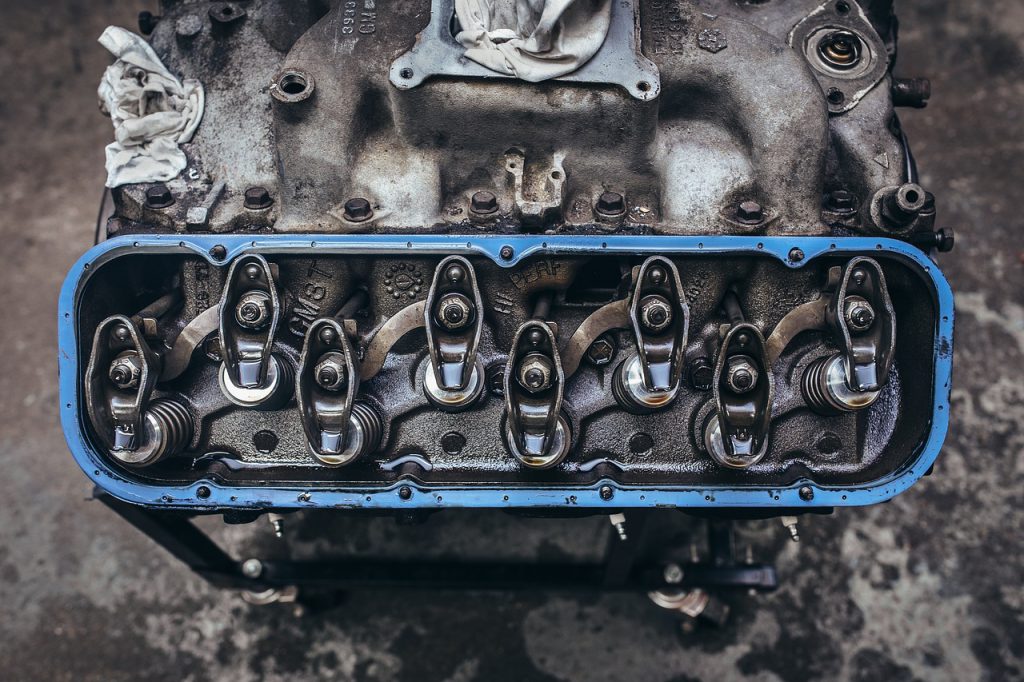And the role of Rheonics Viscosity and Density Sensors
Monitoring viscosity or density in real-time during the production process is crucial for achieving maximum optimization. This approach minimizes downtime associated with quality control, and in most instances, facilitates closed-loop control. The significance lies in the ability to eliminate or significantly reduce disruptions to the process, as opposed to traditional methods that require sampling, which is time-consuming, not reproducible, and operator-dependent.
Long production runs benefit from reduced losses by adopting real-time process monitoring using inline instruments.
 Tank or line monitoring, no direct intervention in the process guarantees high quality and no human contact with the sample.
Tank or line monitoring, no direct intervention in the process guarantees high quality and no human contact with the sample.
Rheonics inline sensors align with the overarching goal of ensuring product quality and offer a simpler path compared to offline instruments. The minimal interruption involved in inline measurement eliminates the need for sampling and reduces the likelihood of human error. Utilizing software enables comprehensive data capture throughout the process, surpassing the limitations of discrete sampling and offline analysis. This approach allows for the timely detection of events requiring intervention, optimization of processes, and insights into both short- and long-term implications of factory processes.
 Real-time data logging, provides a means to observe the smooth operation of the fluid and the overall process.
Real-time data logging, provides a means to observe the smooth operation of the fluid and the overall process.
Monitoring and Controlling Techniques
Method 1: Offline Viscosity and Density Measurement
Benefits: Cost-effective; simple to implement
Drawbacks: Unreliable; slow in responding to changes; manual intervention
Applicability: Can be used in low-precision requirements, smaller system sizes, or infrequent concentration changes.
This technique involves taking periodic measurements of the process fluid using an offline viscosity/density meter. This viscosity/density meter is separate from the process stream and requires manual intervention. This method can be cost-effective and relatively simple to implement; however, it can be quite slow and unreliable in response to concentration changes.
Method 2: Inline Viscosity and Density Measurement and Manual Feed Rate Adjustment
Benefits: Quicker viscosity/density measurements; greater accuracy than Method 1
Drawbacks: Slow adjustment of feed rates; manual intervention; risks of human error
Applicability: This could be useful in cases where the product concentration doesn’t change frequently, and the manpower is available for manual adjustments.
Here, an inline viscosity and density meter like the Rheonics process meter SRD is used to continuously measure the fluid parameters. This meter provides real-time monitoring of the process stream, making it quicker and more accurate than offline measurements. However, feed rate adjustments are still handled manually, which can result in slower reaction times and potential human error, like over-diluting or under-diluting the solution.
Method 3: Automatic Inline Monitoring and Control (Recommended)
Benefits: Real-time accurate measurements; fast control adjustments; low human intervention; consistent quality
Drawbacks: Higher initial installation cost
Applicability: Ideal for larger systems, frequent concentration changes, or high-precision requirements.
This method employs an inline process density and/or viscosity meter like Rheonics process meters to monitor product density and/or viscosity in real-time, combined with a simple controller to adjust the feed rates automatically. This setup provides accurate measurements and allows the controller to make fast adjustments in response to fluid changes, maintaining product quality and achieving tight control. While this method comes with a higher initial installation cost, the benefits of consistent quality, performance, and reduced manpower involvement make it the recommended choice.

Offline analyses suffer from reliability issues and introduce offsets due to delays associated with sampling, transferring samples to the lab, analysis, and result deliveries. These delays complicate the challenge of maintaining optimal operations.
In contrast, real-time data offers immediate benefits, allowing for:
Increase in throughput of the machine.
Reduction of costs by eliminating sampling or making it event-driven
Instant detection of deviations from the process setpoint, enabling consistent maintenance of the process within the preferred operating range by activating valves or making adjustments.
Reduction of overprocessing by stopping at a precisely defined, optimal endpoint.
Minimization of downtime associated with waiting for results, such as in batch releases, thereby maximizing unit throughput.
Some applications and industries using Rheonics sensors for process control
Cheese coagulation
Utilizing data collected and processed by Rheonics CoaguTrack can significantly decrease variations, resulting in improved solid retention and ultimately higher yields. Live tracking of firmness and milk curding are presented in real-time to cheesemakers, enabling quick analysis, prompt reactions, and eventual automation of cheese cutting.
 Cheese coagulation process controlling water and whey addition in tank.
Cheese coagulation process controlling water and whey addition in tank.
Milk powder
The viscosity of the milk during the atomization step plays a crucial role in determining the characteristics of the resulting milk powder. By incorporating SRV process viscometer at the pre-atomizer stage, superior control over the atomization process is achieved. This results in reduced wastage, lower energy consumption, and enhanced control over product texture, bulk density, and moisture content.
 Dairy evaporation milk powder control process
Dairy evaporation milk powder control processAsphalt
Viscosity plays a pivotal role in asphalt applications due to its multifaceted impact on various aspects of the asphalt or bitumen. Maintaining the right viscosity is essential for ensuring the workability of asphalt during mixing and construction, facilitating proper compaction and bonding between layers. Process viscometer SRV is used for blending control, terminal loading and quality assurance of asphalt binder, asphalt rubber and derivative products.
 Equipment for production of asphalt, cement and concrete production.
Equipment for production of asphalt, cement and concrete production.
LNG – Liquid Natural Gas
Globally, the LNG market has expanded at a significant rate in the last decade, and LNG has considerable environmental benefits as a transport fuel. Traders trade LNG based on energy transferred, which is based on volume, density, and gross calorific value. High-speed, accurate density measurements from Rheonics LNG density meter SRD-LNG, therefore, are playing an important role in trading, shipping, and transporting LNG.
 LNG Transportation Pipelines
LNG Transportation Pipelines
Real-time engine oil condition monitoring
Real-time viscosity knowledge proves invaluable in gauging oil aging, identifying contaminants during operations, and preventing potential mechanical failures resulting from the loss of oil lubrication properties. The inclusion of viscosity into inline monitoring systems provides a comprehensive solution for maintaining optimal lubrication properties, preventing viscosity-related failures, and ensuring the longevity of the engine. Regular viscosity monitoring allows for proactive maintenance, reducing the likelihood of unexpected viscosity-related issues and extending the lifespan of the lubricating oil.
 Oil engine monitoring
Oil engine monitoringFor a more in-depth exploration of how viscosity and density monitoring contribute to accelerated, cleaner, and sustainable growth across various applications in the industry, detailed information can be accessed at:

